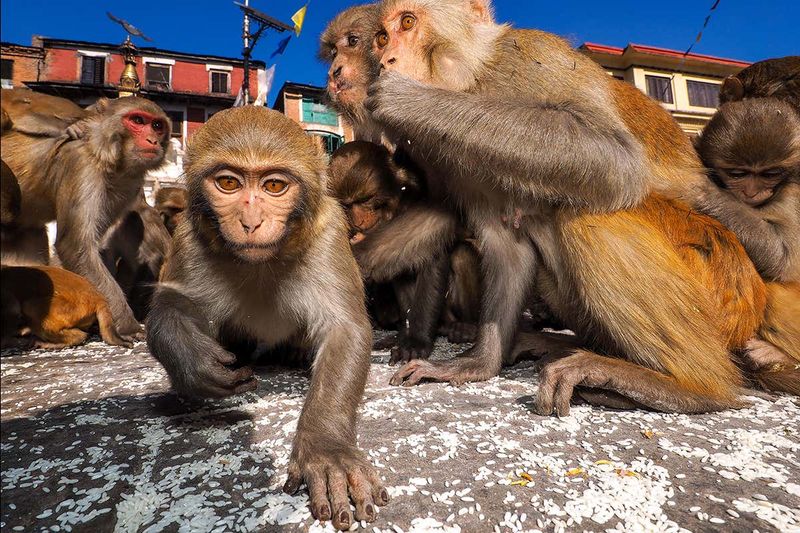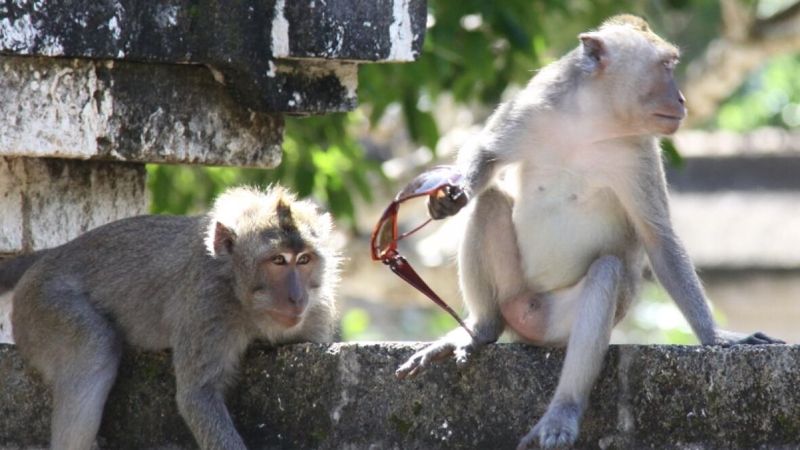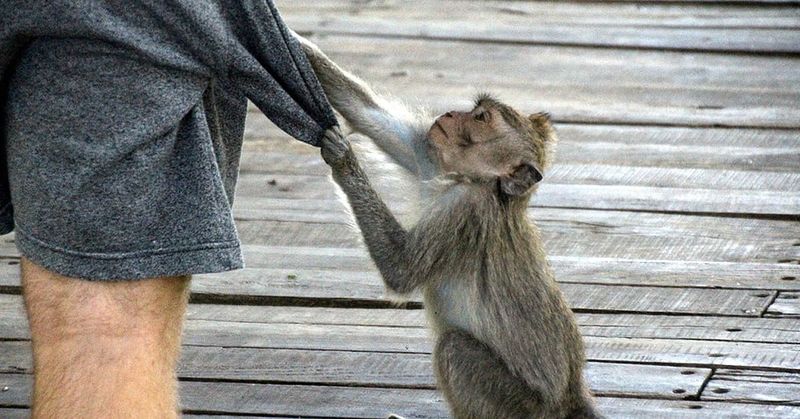The Thieving Culture Of Macaque Monkeys And Their Life Of Clever Crimes

Macaque monkeys have earned quite a reputation as skilled thieves across many parts of Asia. These clever primates have developed sophisticated stealing techniques that have been passed down through generations.
Their thieving behavior has become so refined that it’s now considered part of their cultural identity, showcasing their remarkable intelligence and adaptability in human-dominated landscapes.
1. Survival-Driven Theft

When food becomes scarce in their natural habitats, macaques turn to theft as a survival strategy. Their quick hands and sharp minds help them snatch meals from unsuspecting humans.
This behavior intensifies during dry seasons or when their forest homes shrink due to human development. Rather than simple mischief, these thefts represent a clever adaptation to changing environments.
2. Urban Bandits

City streets have become hunting grounds for opportunistic macaques. They’ve mastered the art of timing—swooping in when restaurant patrons look away or when market vendors become distracted.
Some bold individuals have learned to recognize shopping bags and will specifically target those containing food. Their urban raids have become so common that some cities have created special task forces to manage these furry thieves.
3. Monkey See, Monkey Steal

Young macaques watch their elders intently, absorbing the fine art of theft through observation. A juvenile might spend months studying how experienced thieves select targets and execute their crimes.
This social learning creates theft traditions unique to different macaque groups. In some troops, youngsters practice by stealing from each other before graduating to human targets—essentially attending a primate crime school!
4. Puzzle-Solving Pilferers

Faced with zippers, containers, and other human inventions, macaques showcase remarkable problem-solving abilities. One famous macaque in Thailand learned to unscrew water bottle caps in just three attempts!
Their spatial reasoning allows them to understand which bags likely contain food based on shape and sound. Some have even mastered the art of timing, waiting for humans to pull out phones before snatching them—knowing we’re most distracted during these moments.
5. Tourist Trappers

Beaches and temples frequented by tourists have become prime hunting grounds for macaque gangs. They’ve learned that visitors often carry snacks, cameras, and shiny objects worth investigating.
At popular sites in Bali and Thailand, macaques have perfected a ransom system—stealing valuables and only returning them when offered food. Some crafty individuals even stage distractions while their accomplices raid unattended belongings.
6. Tool-Wielding Thieves

Macaques elevate theft to an art form by using tools to accomplish their heists. Observers have documented them using sticks to pry open windows or containers that might hold treasures.
In Japan’s hot spring regions, macaques have been seen using rocks to wedge doors open while raiding human facilities. One particularly innovative group uses small stones to test if electric fences are active before attempting to cross them for food raids.
7. Collectors Of Curiosities

Shiny watches, colorful hair clips, and even car keys have fallen victim to macaque curiosity. Unlike food thefts, these items are sometimes kept as playthings or status symbols within their troops.
Researchers observed one female macaque collecting small mirrors and shiny objects, which she would examine for hours. Another male was documented stealing a tourist’s hat, wearing it briefly, then using it as a container to collect fruits.
8. Masters Of Distraction

The most sophisticated macaque thieves employ psychological warfare against their human targets. A common tactic involves one monkey creating a scene—jumping, screaming, or acting aggressively—while accomplices sneak in for the actual theft.
Female macaques sometimes use their babies as props, appearing to show their cute infants to tourists while their free hand slips into bags. This combination of distraction and sleight of hand would impress even professional human pickpockets!
9. Organized Crime Rings

Macaque troops operate with surprising coordination during complex heists. Scientists have documented groups assigning different roles—lookouts, distractors, and primary thieves—during coordinated raids on markets.
In one Japanese macaque troop, researchers noted how younger members would scout locations before the dominant males moved in. The stolen goods are often shared based on social hierarchy, with higher-ranking individuals getting first choice of the loot.
10. Human-Monkey Conflict Zones

Certain regions have become infamous for macaque crime waves. In parts of India, businesses hire monkey-chasers equipped with sticks and slingshots to guard their establishments from persistent raiders.
Local governments struggle to balance wildlife protection with public safety concerns. Some areas have implemented controversial sterilization programs to control populations. Despite these measures, macaques continue to adapt their theft techniques to overcome human countermeasures.
11. Evolutionary Pickpockets

Millions of years of evolution have equipped macaques with the perfect toolkit for theft. Their nimble fingers can manipulate objects with precision rivaling human dexterity, while their powerful arms allow quick escapes with stolen goods.
Their ability to move between bipedal and quadrupedal locomotion gives them versatility during heists. Most impressive is their memory—macaques remember successful theft locations and techniques, returning repeatedly to profitable spots.
12. Sacred Site Swindlers

Temples across Asia face a unique challenge: macaques who’ve learned religious sites offer easy pickings. These monkeys target offering plates, prayer items, and food left by worshippers.
At Bali’s sacred Uluwatu Temple, macaques have developed a reputation for stealing glasses, cameras, and hats. Temple staff have become skilled negotiators, trading bananas for the return of visitors’ belongings. Some locals believe these temple-dwelling thieves possess spiritual significance despite their mischief.






